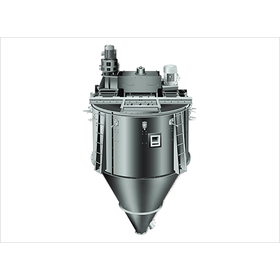<Classifier> No external blower is needed as it generates classification airflow with the built-in main wing! For classifying cement, silica sand, etc.! [Test machine available]
The SAS type air separator is a dry classification machine primarily used for the classification of cement, silica sand, limestone, and slaked lime. It efficiently disperses using a circulating airflow and can handle large volumes through the use of centrifugal force. Additionally, we also manufacture the TMS type (twin motor). ■ We have a test machine available at our factory. We look forward to your requests for classification tests. Please feel free to contact us through the inquiry form. * For more details, please contact us or download the catalog. * Technical materials are also available.
Inquire About This Product
basic information
~Features~ 1. The air separator generates classification airflow with its built-in main wing, eliminating the need for an external blower. 2. Cyclones and bag filters for fine powder collection are also unnecessary. 3. The product particle size can be adjusted while the machine is stopped, allowing for fine adjustments. 4. The classification point can be set in the range of 75μm to 150μm. *For more details, please contact us or download the catalog.*
Price information
-
Delivery Time
Applications/Examples of results
~Applications~ - Cement, limestone, slaked lime, quicklime, silica sand, lime, etc. - Special materials such as plant fibers
catalog(2)
Download All CatalogsCompany information
Since our founding in 1913, our company has focused on developing and manufacturing machinery for the powder industry, centered around crushing, grinding, classification, drying, and calcination, as well as general industrial machinery for sectors such as chemicals, glass, cement, steel, and mining, along with machinery related to environmental protection and recycling. The applications and demand for our products span a wide range of industries, contributing to the development of various sectors including chemicals, glass, carbon, cement, silica sand, steel, lime, building materials, new materials, and food (such as tea leaves, rice, kelp, young barley leaves, buckwheat, soybeans, corn, and bonito flakes).










![Burr Removal Machine "Triple Baritol" [Eligible for Small and Medium Enterprise Labor-Saving Investment Subsidy]](https://image.mono.ipros.com/public/product/image/fbb/2000308526/IPROS10846500360243567721.png?w=280&h=280)


